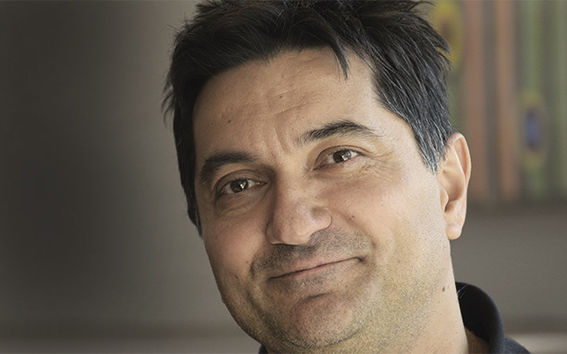What might musical instruments of the future look like?

When Koray Tahiroğlu talks about music, his eyes light up. "There is something special about music," he says. What the Department of Media researcher means is that even among the arts, music has an exceptional part in our lives and the lives of our friends and family. In fact, Tahiroglu claims that not a single day passes when each of us does not hear a piece of music, whether we want to or not. Whether it's a bassline from a passing car or a few notes hummed by a colleague, his argument is at least difficult to dismiss. "I made that claim in my doctoral thesis and so far, no one has come forward to correct me," Tahiroğlu laughs.
Tahiroğlu is investigating the way we interact with music, specifically the relationships we have with digital musical instruments in performance and the cultural aspects of these relationships. His project in the Sound and Physical Interaction research group (SOPI), which he heads, is entitled "Digital Musical Interactions - Instruments - Performances". In April, the project was funded for a five-year term by the Academy of Finland, only the second time a School of Arts, Architecture and Design research project received such funding in its history.
According to Tahiroğlu, digitalisation has created new possibilities for utilising new interfaces for musical expression. It also creates a space for new music practices to emerge. Still there is something missing. Often driven by technology alone, digital music as a form of musical practice is increasingly decoupled from the established relationships we have between composition, performance, instruments and environment. This is something that both performers, composers, instrument designers and audience member are missing, namely the interaction with the digital instrument and the engagement with the musical performance.
"Music is inherently a sociocultural activity. You go to a concert with your friends, you listen to music with your family," explains Tahiroğlu. When people watch someone playing a violin onstage, they know what to expect. Humans are culturally conditioned to understand the context 'stage-performer-music-instrument’. With digital music, Tahiroğlu argues, it is different. There is a disconnect in relationships and interactions between performer, instrument, audience and the performance environment.
The SOPI research group aims to find the missing link in digital music by exploring the cultural and technological constraints of digital music practices. Tahiroğlu and his colleagues will bring together composers, musical instrument designers, performers and listeners to outline these cultural factors. The project will officially kick off in September after the summer holidays.
When asked what to expect in coming months from the group, Koray Tahiroğlu smiles. "There will be a lot of music," he says. And that is something each one of us can get excited about.
More information:
Koray Tahiroğlu
Phone: +358 50 4088441
- Published:
- Updated:
Read more news

DeployAI Partners Gather for Heart Beat Meeting in Helsinki
The European DeployAI project's partners gathered for the Heart Beat meeting hosted by Aalto University Executive Education in Helsinki.
Get to know us: Associate Professor Maria Sammalkorpi
Sammalkorpi received her doctorate from Helsinki University of Technology 2004. After her defence, she has worked as a researcher at the Universities of Princeton, Yale and Aalto.
Aalto computer scientists in ICML 2024
Computer scientists in ICML 2024